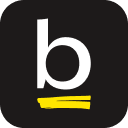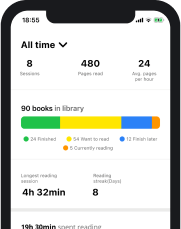Using different reading techniques yields different results. As readers, we tend to try and diversify our strategies as much as possible in order to achieve levels of proficiency that are only available to those who put in the necessary work and dedication. One of the skills every reader worth their salt should possess is the ability to read inspectionally. What is inspectional reading and how can it revamp your reading habits and performance? Well, that is what we are here to find out.
Here at Basmo, we dedicate a lot of time and resources to doing proper research on topics all readers should be interested in. Our ultimate goal is to help you improve your reading proficiency, speed, and overall experience and bring you to new, exciting levels.
What is inspectional reading?
The inspectional reading definition states that it represents skimming a book to get a sense of its structure and main ideas. The goal of inspectional reading is to allow you to gain the best level of comprehension of the book as a whole within a limited period of time.
The vast majority of people read books from beginning to end, starting on page one and finishing with the last. While in some respects this is a simpler approach, it really hinders comprehension to a certain extent because you are simultaneously attempting to absorb and retain the content of the book, understand what it is about, and actually read it.
What characterizes inspectional reading?
Inspectional reading is a type of reading where you go through the text quickly, looking for the main ideas and important details. It’s different from analytical reading because you’re not looking for specific information, but rather high-level concepts and ideas. You can use inspectional reading when you have limited time to read or if you’re just trying to get an overview of something before moving on.
Inspectional reading is characterized by skimming over the text at first, then going back and rereading it more carefully if needed. You might start with a quick scan to get an idea of what the text is about and its structure, only to later read it carefully and absorb the details and key information.
Inspectional reading is generally characterized by three things:
- Skimming through the text for keywords, sentences, and paragraphs
- Identifying the author’s purpose and main idea
- Using this information to evaluate the text. You can either decide whether you want to keep reading it if the decision is up to you, or go back anyway for a more in-depth analysis of the book or text if this is part of an assignment.
What is the aim of inspectional reading?
Your objective with inspectional reading is to quickly and thoroughly understand the book or reading material and a realistic goal would be going through a 300-page book in 15 minutes. While this may seem too good to be true, it is exactly what you should expect to achieve once you’ve mastered inspectional reading.
The aim of inspectional reading is to quickly and thoroughly understand the book or reading material. Inspectional reading is used as a tool for finding out if the book is worth reading or to gain a general idea about its structure and theme to aid in an analytical reading session, but it does not provide an in-depth understanding of the text.
When you read a book using inspectional reading, you should be able to:
- Understand the overall structure and organization of the text
- Identify what information is being conveyed in each section of the text
- Know how each section fits into the overall context of the book
What are the two types of inspectional reading?
To better understand the inspectional reading meaning, some context would help. Reading, as a skill, can be described as having a series of levels. One thing I should mention for the sake of clarity is that this type of reading is part of a series of four different levels:
- Elementary Reading
- Inspectional Reading
- Analytical Reading
- Syntopical Reading
One other thing worth mentioning is that these levels are cumulative. That means that elementary reading is a part of inspectional reading, while inspectional reading is a part of analytical reading, and syntopical reading includes all the levels on the list.
With that out of the way, it’s time to see what inspectional reading actually consists of. There are two sub-types of inspectional reading:
- Systematic skimming (also known as pre-reading)
- Superficial reading
What is systematic skimming?
Systematic skimming is a type of inspectional reading that involves looking for specific pieces of information in a text. Systematic skimming or pre-reading is a good way to prepare for analytical or critical reading, because it helps you get an overview of a text and make sense of it before you start analyzing it in detail.
One way to do systematic skimming is by looking at the title, subtitles, and other headings in the text. Another way is by going through the table of contents or index. You are not trying to understand every word or every detail – you are just trying to get a good idea of what the book or reading material is about.
What is superficial reading?
The second sub-type of inspectional reading may seem to have a negative connotation. The truth of the matter is that superficial reading plays an important role in inspectional reading and speed reading.
This sub-level or stage consists of reading the actual content and not only analyzing its structure. Superficial reading is the stage of inspectional reading in which you are required to only skim the text. You may not read every word, but you will at least take in the title and a few sentences from each paragraph.
How to do inspectional reading?
While inspectional reading may seem like a relatively simple thing to do at first glance, the truth is that doing it properly will take some learning and getting used to. It is by no means similar to a superficial or passive reading session. Despite the fact that you are not going into too much detail or actually analyzing the text, inspectional reading is done with a clear purpose in mind and comes with a series of benefits.
We believe it is essential for you to have a good understanding of inspectional reading and the way you are supposed to do it whenever you need to, so here is our step-by-step guide.
A step-by-step guide to inspectional reading
- Read the title and preface. Quickly read each one. Pay close attention to any subtitles or other descriptions about the book’s theme, objectives, or unique perspective of its author on the subject. By the end of this step, you should have a good idea of the book’s subject. You can take a short break if you’d like to mentally classify the book in the right category. What category of books you already read does this one fit into?
- Continue with the table of contents. Use the table of contents as you would a road map before a journey to get a rough idea of the structure of the book. It is amazing how few people even give a book’s table of contents a glance unless they need to look anything up. It is terrible to realize that many authors invest a lot of time designing the table of contents only to have it be ineffective.
- Analyze the table of contents to discover the range of topics that are covered in the book. Estimate the scope of the topics covered and the categories of books and writers mentioned as references (if this is a non-fiction book). Read some of the additional texts when terms that seem important are listed. These paragraphs you read could contain the book’s turning point or key statements that reveal the author’s methodology, approach, and general outlook.
- Look over the main chapters and read their summaries. Look now at the chapters that seem to be essential to the book’s theme or purpose, based on your broad and still somewhat vague understanding of its contents.
- Skim through the rest of the book just enough to understand the basics. Finally, start leafing through the book, pausing occasionally to read a paragraph or two, occasionally several pages in a row, but never more. Browse the entire book in this way, keeping an eye out for any indications of the primary argument or other key information. Do not, under any circumstances, skip the final two or three pages of the book or, if there is an epilogue, the final few pages of the main body. Few authors are able to resist the urge to summarize in these pages what they believe to be relevant, new, and significant about their work.
Inspectional reading examples
A good example of inspectional reading is what you do every time you visit a bookstore. Whenever you pick up a book and look at it trying to determine whether you should buy it or not, you are reading it inspectionally to a certain extent. You look at the title, you read the information on the back trying to figure out what it is about, you go through the table of contents to identify the main ideas, and you even leaf through it to get a sense of what the author is trying to communicate through the book.
Another good example of inspectional reading is flipping through a comic book. When you look over a couple of pages to get a sense of who the characters are and what the comic book is about, you are using inspectional reading.
How can Basmo help you with inspectional reading?
Basmo is a reading tracking app that comes feature-packed to the brim with the sole purpose of making you the ultimate reader. It can be used for a huge range of purposes and will have a tremendously positive effect on your reading habits and performance.
Here are a couple of reasons you should always use Basmo when reading inspectionally.
With Basmo, you can easily take notes. Even though inspectional reading is defined as a fast and superficial reading technique, depending on the main goal of your session, taking notes can make things a lot easier and increase your performance. For example, if your inspectional session is simply part of a pre-reading strategy leading to a more complex analysis of the text, jotting down the key information about the text or book can help you tremendously in the later stages of analytical reading.
Every reading session that gets started in the Basmo app triggers the launch of the note-taking feature, which becomes immediately available. So all you need to do is simply start typing whenever you want to make a note. The notes can be formatted however you see fit, which means that your notes are always going to be well organized.
Basmo allows you to keep your reading lists separate. Some books require more attention and a different approach than others; that is a well-known fact. To make sure you always apply the correct reading strategy to the book at hand, you should have separate lists according to the difficulty level of the book or the things you are hoping to achieve by reading it.
Basmo takes TBR lists to the next level. On top of the predefined lists the app comes as default with, you can create and customize new book collections however you see fit. You can therefore easily create lists of books you can read inspectionally. As soon as you finish reading them, Basmo will automatically add them to the list of books you’ve finished reading.
You can set clear reading goals. Getting the hang of inspectional reading will open a limitless world of possibilities in terms of the number of books you will be able to extract essential information from. That being said, even though you will only apply inspectional reading to some books, you can still take advantage of this technique to boost the number of books you read.
With Basmo, you can set reading goals. You can either select a daily challenge to read for a certain number of minutes or a yearly goal for the total number of books you will read within a year.
Final thoughts
So, what is inspectional reading? Depending on how you use it, it can be a speed-reading technique. In other cases, it can be a pre-reading strategy that allows you to perform better in your upcoming analytical reading session. Or, it can simply be a way for you to decide whether a book is worth reading or buying. Regardless of the ultimate goal of your inspectional reading session, using Basmo is going to massively improve your performance and results.
Image by macrovector on Freepik







